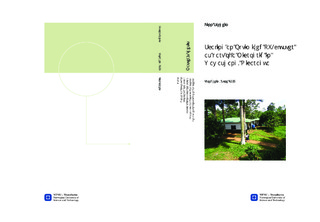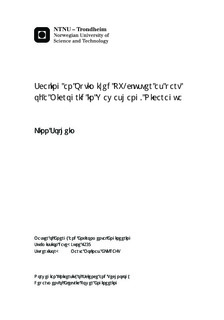| dc.description.abstract | The rural FADCANIC complex in Wawashang close to the east cost of Nicaragua, is one of the few rural areas in the east that to a certain degree have been electrified. The Wawashang complex is a boarding school with a large plantation and a carpentry shop, educating and giving children and young adults work experience. The complex has limited access to electricity, as the electrical system consisting of decentralized Photovoltaic (PV) panels and diesel generators, is partly defect, inefficient and needs to be re-scaled as the complex will expand and there will be insufficient supply in the future. In this thesis, an investigation around the possibility of installing a large photovoltaic array as a part of a micro-grid for sufficient supply in the future, has been made. It has by the help of the two energy modelling software simulation tools PVsyst and HOMER, been studied whether a photovoltaic system with or without a backup diesel generator combined with the PV-cluster is a feasible, optimal, sustainable and reliable configuration of the system. The term optimality embeds economical, technical, environmental, social and cultural aspects. The main focus will be technical and economical optimality as well as accessibility of equipment has been an important restriction. The closest grid connection is in a village called Kakabila, which is approximately 65 km distant from the Wawashang complex and connection to the grid as an alternative to a microgrid ha been investigated.It was found that by performing simulations with the two software tools, approximately the same system design was found and by applying PVsyst`s information of technical optimality and HOMER`s results on economical optimality, an optimal design could be identified. By combining the results it was found that even if the reliability of a system with backup would be higher, the optimal system with no backup is stated to be the best fit for the Wawashang complex. This because the design is a result of load profiles for 2023 being applied to the simulations and the hope is to within a couple of years study the biomass potential of the area further for considering integration with the microgrid. The fact that no backup-generator would have to be used, would lead to yearly-avoided emissions of 3777 kg CO2. The optimal system consists of a 124 kWp PV-cluster consisting of 576 Kyocera PV-modules of 215 Watts and a battery-pack containing 480 Trojan 6V batteries with 420 Ah capacity as well as a 50 kW inverter. The systems has a yearly supply to the user of 136 600 kWh resulting in a yearly shortage of 8000 kWh amounting to 5.5%. The net present cost of the system is according to HOMER 770 101US$. Alternative cost related to connecting to the national grid has been found to be 1 949 928 US$ and underlines the optimality of the suggested system.This particular thesis has been a collaboration between the Norwegian University of Science and Technology, Engineers Without Borders Norway and the Nicaraguan organization FADCANIC. The work with the thesis has been rather unconventional, pioneering and very dynamical, as a large part of the work with the thesis has been data collection during a 4-week fieldtrip. | nb_NO |

